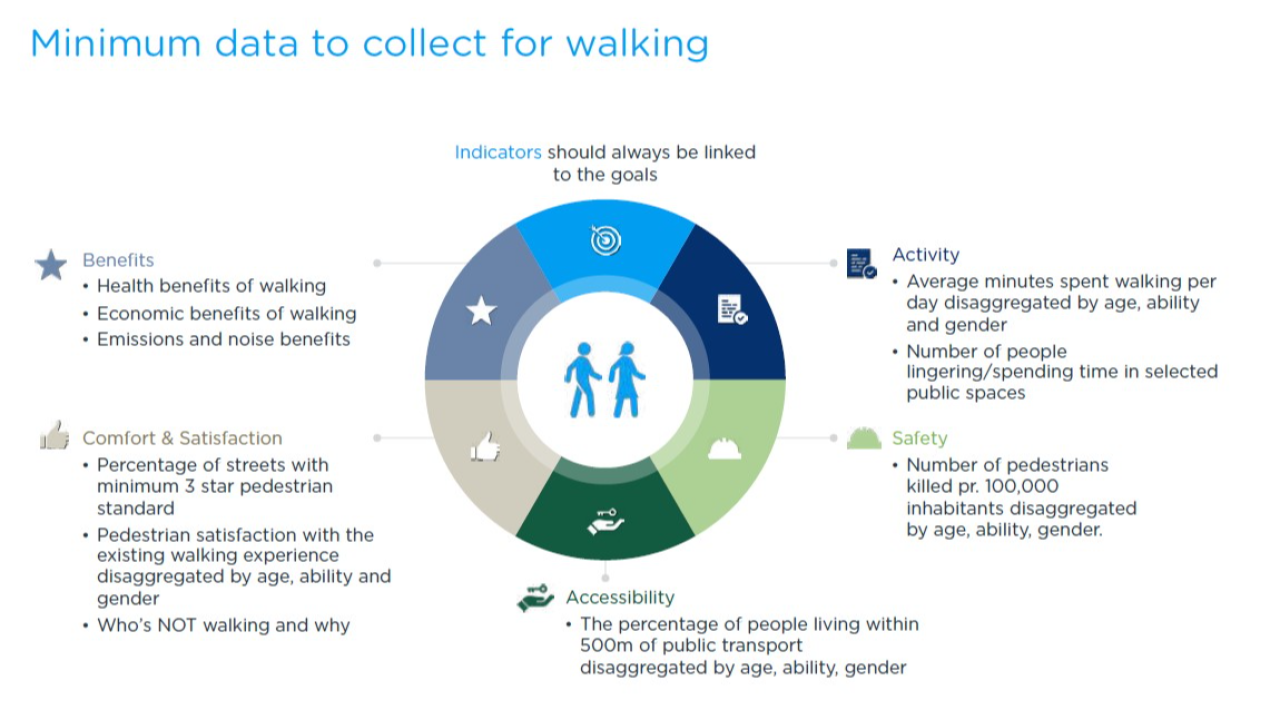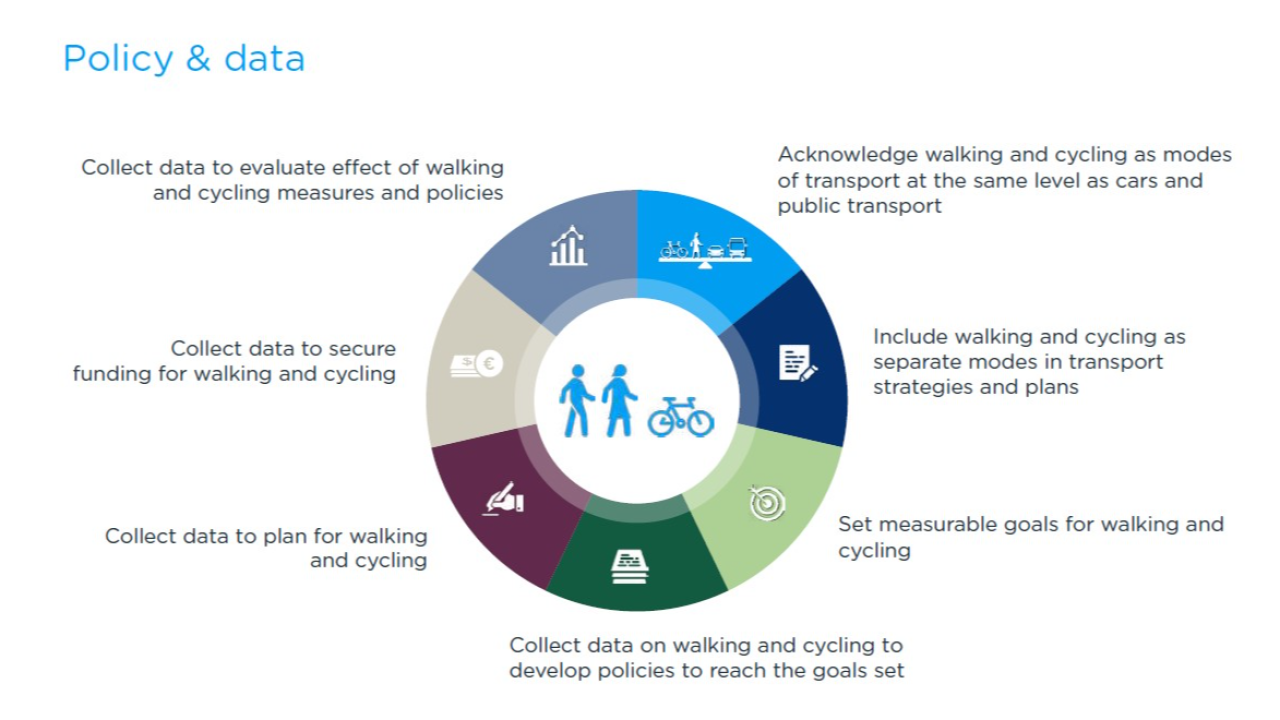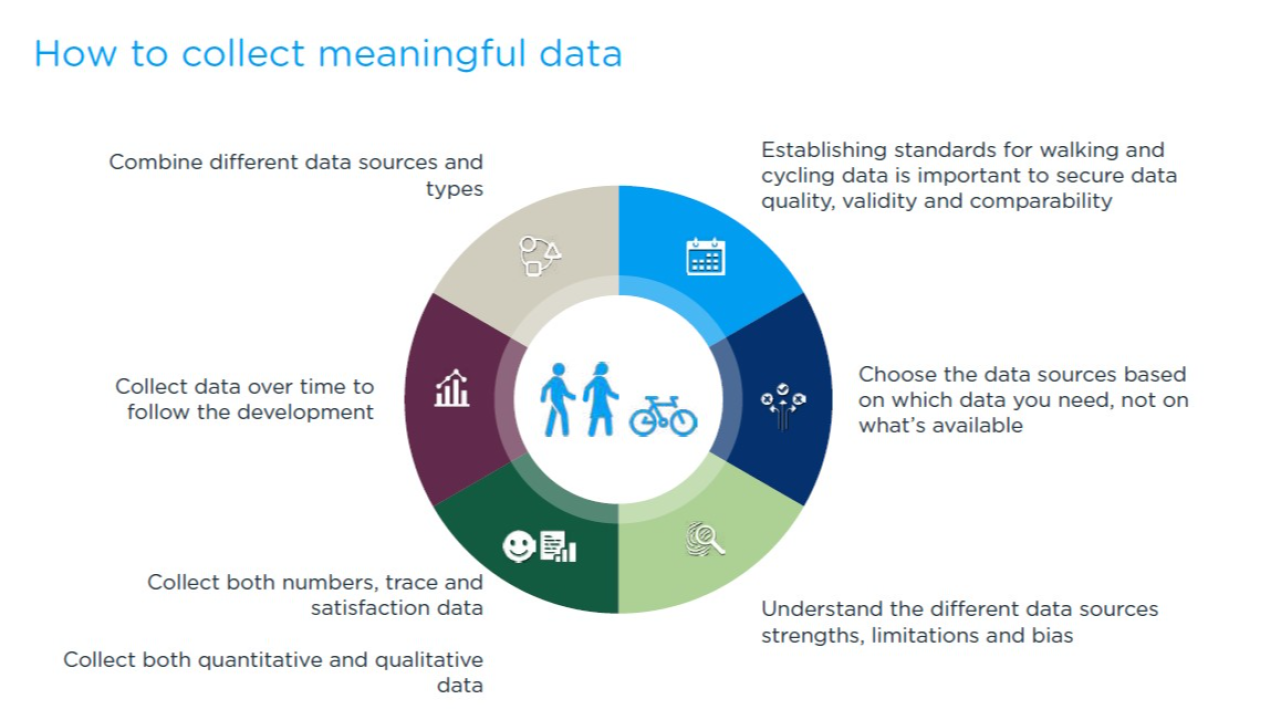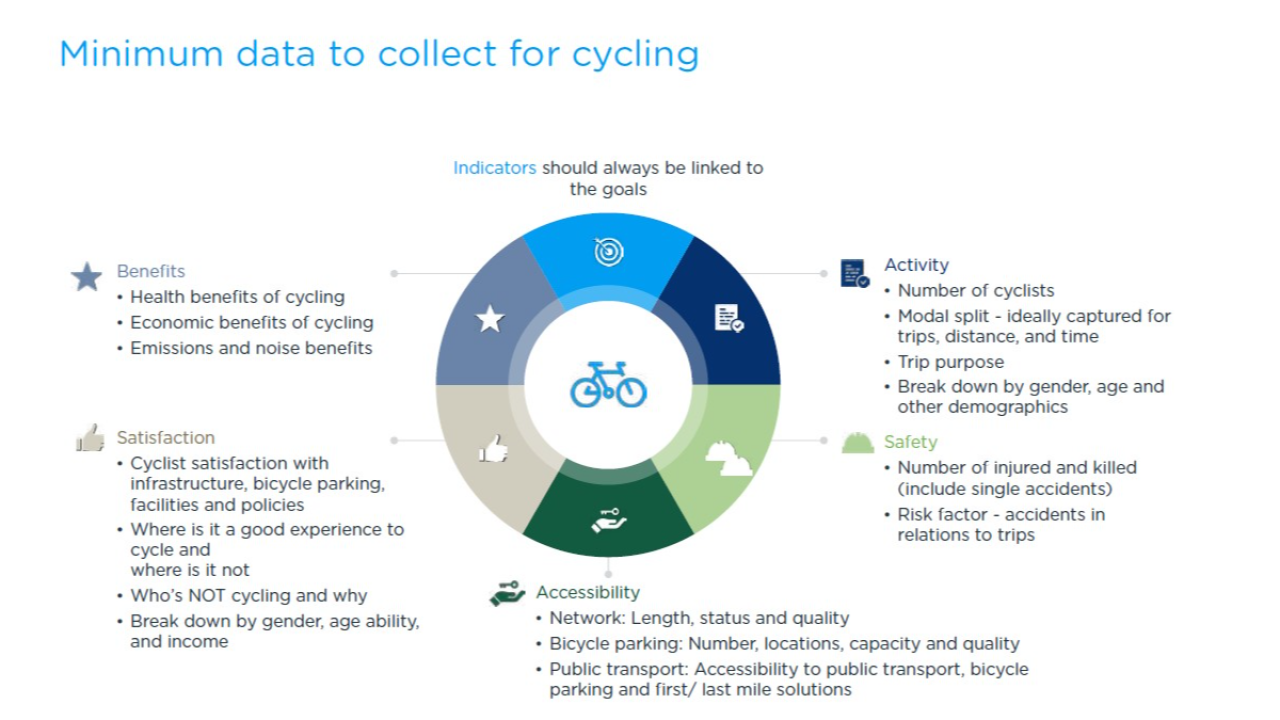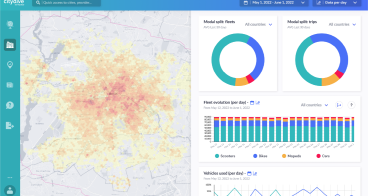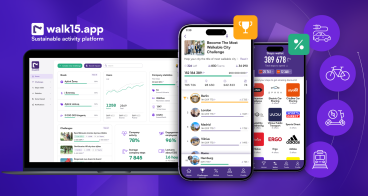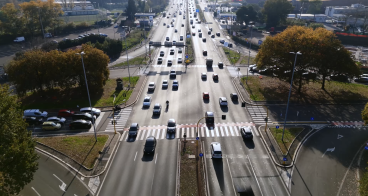Walking and cycling data: practice, challenges, needs and gaps
More and more people are walking and cycling in cities around the world – the trend was there already pre-COVID, but the pandemic boosted both the need for and political focus on walking and cycling as a way of getting around our cities in our everyday lives achieving greener, more climate-friendly, healthier, safer and more space efficient cities
But unlike cars, public transport, and new mobility solutions there’s a lack of data about walking and cycling. Data on pedestrians and cyclists is not systematically collected, has limitations and can be difficult to compare and benchmark. But data on walking and cycling is important for cities in order to be able to set goals and targets, create the policies needed to reach these goals, track progress and make decisions about investments in infrastructure and planning measures that support walking and cycling.
Lack of data also means that walking and cycling is often missing or overlooked in the transport and mobility ecosystem – because what is not measured does not count. Often pedestrians and cyclists only become visible in data when they get hurt or die in accidents. Lack of data also means a lack of knowledge about why different people are not walking and cycling – at all or in specific streets or areas. Data is put simply as a way of creating awareness and making the invisible visible.
In Ramboll Smart Mobility we have published a report investigating how different public authorities work with walking and cycling data – what are the practises, needs and challenges in relation to walking and cycling data collection and benchmarked the available data sources against the most common indicators. The report is available for download in the files section below.
The purpose of data collection
As Philippe Crist, advisor ITF, OECD points out in the report, data is not in itself the main trigger for change, but it can and should guide change: “Using data should always be a response to a specific need or challenge you want to deal with. Data is not the solution, but a way to understand a problem better in order to develop the policies needed to create change”. Data is what you need to guide the actions that will deliver the goals set. The vision should drive policies and actions, and these policies and actions should be guided by data.
Walking and cycling data practice, needs and challenges
As the report documents cycling and walking do not have the same political attention as cars and public transport. It manifests in a lack of goals, strategies, and policies - especially for walking.
But it also manifests in data collection. Walking is at the bottom of the mobility data hierarchy – only 1/3 of the public authorities in the public survey report collecting walking data, while 2/3 do it for cycling.
If data is collected for walking, the scale is lower than for cycling both in terms of indicators and data sources used. Our partners and supporters also express that lack of understanding of the need for collecting walking data is a key challenge in their organisations.
Since collecting data is about decision-making, policies, planning and monitoring change, lacking of walking and cycling data means a poor foundation for policy-making and planning for walking and cycling. Walking as well as cycling is both a sustainable and healthy way of moving in cities on its own, but also what connects and brings us to all other modes. Lack of focus, data and knowledge about walking has consequences for the experience of the whole mobility system and is thus a big challenge for creating a sustainable, attractive, multimodal mobility system that can challenge car dependency in cities.
Due to the lack of standards for walking and cycling data the main challenges that planners experience are poor data quality, validity, and comparability. Establishing the needed common standards on both national and international levels for the collection of basic walking and cycling data is an important step towards securing good data and thus better policies for walking and cycling data.
Data collection for vehicle traffic is typically about making car driving more efficient, reducing stops and improving travel time. Travel time is not a key indicator and focus for walking and cycling. The number of cyclists and pedestrians, safety, the experience of walking and cycling, and satisfaction with the conditions are the key indicators for walking and cycling. That means a need for both quantitative and qualitative data related to safety, experience and satisfaction with walking and cycling. It also means a need for data about individual characteristics of pedestrians and cyclists – who are experiencing what and where in order to improve the conditions for those groups. These data can only be obtained by actively involving the users which makes them harder and more resourceful to collect. Understanding how to collect and analyse these data as well as understanding potential data bias when analysing the data makes it challenging and costly for public authorities to collect these data.
Another aspect repeated among the public authorities interviewed is the fact that the movements of people walking, and cycling are more natural, fluid, and unpredictable compared to the more structured flows of for example car traffic. That means that it’s more challenging to collect data about pedestrians and cyclists. GDPR and privacy legislation are also a challenge in relation to GPS and trace data. Access to trace data about the actual movement of people walking and cycling is very high on the authority’s wish list and identified as a gap in the market.
Another key challenge is that some of the most important data – why are people not walking and cycling - are invisible and need to be made visible and collected through more resource-heavy ways – like interviews and surveys.
Recommendations
On the basis of the expert interviews, the 18 partner and supporter surveys and in-depth interviews and the global survey, been developed by the partnership produced a series of recommendations that are presented in the images section, below.
Fact Box
The report is a result of a partnership between 11 public authorities, City of Ghent, Copenhagen, Tampere, Lahti, Trondheim, Grimstad, Malmo, Rotterdam, Province of Utrecht and the Norwegian and the Dutch Road Administration and the two leading NGOs for walking and cycling in Europe, European Cyclists' Federation (ECF) and Walk21 Foundation.
If you're interested in learning more about walking and cycling data, you can refer to the attached report in the files section below.
Published on 24 January, 2023.



